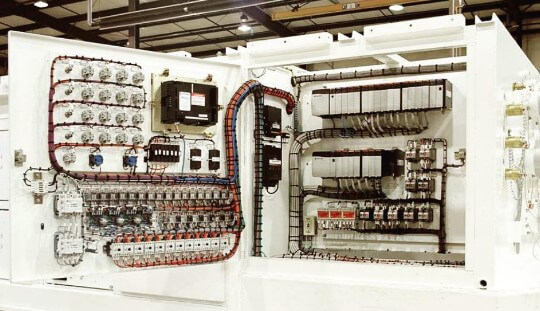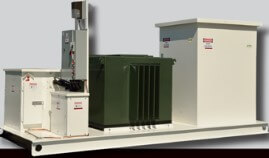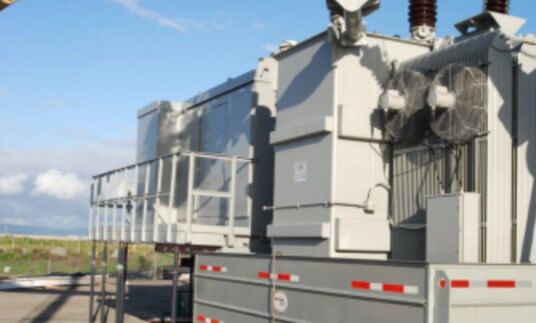The global demand for electrical power has been on a steady rise, driven by industrialization, technological advancements, and the growing need for electrified infrastructure. Meeting this escalating demand efficiently and reliably necessitates the existence of power-generating substations. These substations, which can be classified into various types such as thermal, atomic, or hydroelectric, are strategically situated based on the availability of energy resources. However, these power generation facilities are not typically located in close proximity to the actual areas where electricity is consumed, known as load centers. This spatial disparity between power generation and consumption requires the establishment of an extensive transmission network to enable the efficient transfer of electrical power from the substations to the load centers. In this context, electrical substations play a pivotal role, serving as crucial components in the journey of electricity from its point of generation to its point of utilization. In this article, we will delve deeper into the world of substations, exploring their diverse types, functions, and significance in the modern electrical power system.
Understanding Substations:
At its core, a substation is a high-voltage electrical system designed to control generators, apparatus, electrical circuits, and more. The primary function of substations extends beyond control; it involves the transformation of alternating current (AC) into direct current (DC) when necessary. Substations exhibit considerable variability in terms of their size and complexity. Some substations are compact, housing only an inbuilt transformer and related switches, while others are expansive facilities equipped with multiple transformers, various equipment, circuit breakers, and numerous switches. This range in size and capacity allows substations to cater to a wide array of electrical power distribution needs.

GET IN TOUCH
The ultimate solution for reliable power control! call us at 276-285-3841
Types of Substations:
Substations can be categorized into several types based on their functions and roles within the power grid. These classifications include:
Step-up Type Substation
A step-up type substation receives electrical power from a nearby production facility and employs a large power transformer to elevate the voltage level. This increased voltage is essential for efficient transmission to remote locations. Step-up substations utilize a transmission bus to transfer power to transmission lines. Additionally, they can control the incoming power received by the generation plant, enabling it to power the various apparatus operations within the plant.
Customer Substation:
A customer substation serves as the primary power supply source for a specific business customer. The technical requirements and configuration of this type of substation are highly dependent on the unique needs and demands of the customers it serves. Consequently, customer substations are tailored to ensure a reliable and customized power supply.
System Stations:
System stations play a critical role in facilitating the transfer of a substantial amount of electrical power within the grid. These substations may or may not include power transformers. Some system stations primarily serve as end-points for transmission lines originating from switchyards, supplying electrical energy for circuits that power transformer stations. System stations are integral to maintaining long-term grid reliability and are regarded as strategic facilities in the power network.
Distribution Type Substation:
Distribution substations are strategically located within the power grid where primary voltage distributions are stepped down to consumer supply voltages through a distribution network. These substations play a crucial role in ensuring that electricity is delivered to homes, businesses, and industries at the appropriate voltage levels.

GET IN TOUCH
The ultimate solution for reliable power control! call us at 276-285-3841
Step-down Type Substation:
Step-down substations are distributed at various points within an electrical network to connect different parts of the system. They serve as a source for sub-transmission or distribution lines by converting higher transmission voltages to lower sub-transmission voltages. This transformation is vital for efficiently distributing electricity to end-users.
Underground Distribution Substation:
In densely populated urban centers where space is limited and valuable, substations are often installed underground to optimize land usage. Underground substations allow the surface area to be utilized for other constructions, such as buildings and shopping malls, while still delivering reliable electrical power to the surrounding areas.
Switchyard:
A switchyard acts as an intermediary interface between transmission and generation facilities. Its primary function is to maintain consistent voltage levels and supply the energy generated by power plants to nearby transmission lines or the broader power grid at specific voltage levels.
It's important to note that substations also vary in terms of their voltage capacities. Examples include 11 kV substations, 220 kV substations, and 132 kV substations, among others. Moreover, substations can be classified based on various criteria, including their nature of duties, the services they render, their operating voltage levels, their importance in the grid, and their specific design features.

GET IN TOUCH
The ultimate solution for reliable power control! call us at 276-285-3841
Conclusion:
In conclusion, substations are the unsung heroes of the modern electrical power grid, serving as the critical link between power generation, transmission, distribution, and ultimately, the end-users. Understanding the different types of substations and their specialized roles within the intricate web of the electrical power system provides a more comprehensive view of how electricity flows seamlessly from its point of origin to power the myriad of devices and systems that define our electrified world. As our society continues to evolve and our power demands grow, the role of substations will remain central in ensuring the reliable and efficient delivery of electrical energy to meet our needs today and into the future.
Our Expert Services
Swartz Engineering provides top-quality products to meet our customers' needs. We also make sure our products work reliably and safely. Our products include:
- Type 76 DC Relay
- Type 82 DC Relay
- Swartz Engineering’s Type 64 Ground Relay
- Type 32 Reverse Current Relay
- Type 150 DC
- CSM Shield Monitor
- Metal Oxide Surge Arrestors
- Transducers
- MVIS SL Slim-line Contactor
- Fully-tested Power Control Rooms
- Swartz Engineering’s Portable Substations
CONTACT US
Take the first step towards powering up your operations! call us at 276-285-3841
